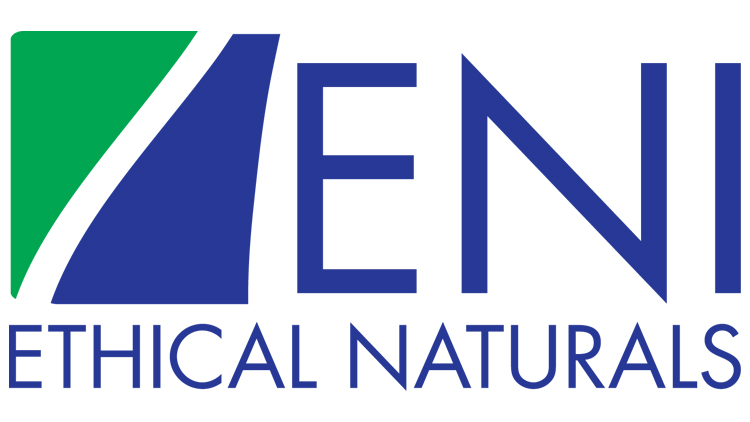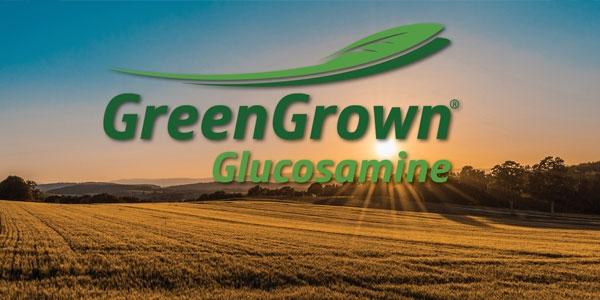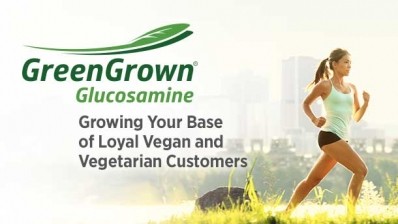Promotional Features
GreenGrown glucosamine is USP grade, Non-GMO and Kosher Certified, protected by 20 patents
Glucosamine: history and nature
Glucosamine was first identified and prepared in 1876 by Georg Ledderhose, through a process that involved the hydrolysis of chitin with concentrated hydrochloric acid. However it wasn’t until the 1960’s that its potential application in joint care was discovered in Italy by Professor Luigi Rovati, the founder of the pharmaceutical giant RottaPharm-Madaus.
Glucosamine is an amino monosaccharide that is found naturally in healthy joints, cartilage, ligaments, muscles and tendons. It helps in the formation and repair of cartilage and other body tissues. It’s also found in a number of foods, such as beef and chicken, but is denatured by the cooking process, making it hard to digest.
Glucosamine was first used during the 1970’s in veterinary medicine, primarily as an injectable, but as its benefits became understood it became widely used as a human food supplement.
Vegetable glucosamine adds value in today’s joint care market
As a result of its long-term popularity, today’s joint care supplement market is crowded with hundreds of choices. Formulas based on glucosamine from shellfish, and chondroitin from bovine cartilage still form the core of market-leading brands.
These products however do nothing to address the needs of the growing number of vegan and vegetarian consumers. For example, today in the US, 35% of supplement users say that a vegetarian source is important when choosing a supplement, up from 26% in 2006 [1]. Also, vegetarian-aware consumers tend to buy 3 times more supplements than other shoppers, and their purchasing patterns demonstrate brand loyalty [2].
Now that core ingredients are available from vegetable sources, including chondroitin and MSM, products can be made that appeal to this growing consumer group. To date, a number of key market leaders and pioneering brands have moved in this direction.
GreenGrown: verified identity and quality that’s essential today
GreenGrown glucosamine is the only glucosamine source that can guarantee 100% vegetable origin by Isotopic Signature Carbon Tracing (ISCT), a method developed by ENI for glucosamine identity, and granted a patent in 2009. This is an essential step in today’s supply chain to assure identification, safety and quality; because of the high purity level (greater than 98%) of all glucosamine material, it’s not possible to determine through HPLC or other methods, whether the source is vegetable or shellfish. Also today, final processing of both sources of glucosamine is often done in the same facilities.
This source identification is also important for correct labeling, as products containing shellfish may trigger allergic reactions.
In addition to this ISCT identity guarantee, all GreenGrown glucosamine is certified Non-GMO and Kosher and is tested and supplied through ENI’s NSF certified manufacturing, distribution and laboratory testing facility.
The value and protection of international patents
Many major brands today sell products internationally, and this is just one reason why US and international patents are highly valued. The patents for the production of vegetable source glucosamine by fermentation were first developed and granted in the US in 2012, and since then 20 patents have been granted 12 countries: China, Germany, France, United Kingdom, Netherlands, Japan, Mexico, Australia, Brazil, Canada and Korea. Ethical Naturals Inc (ENI) is the exclusive licensee of these patents that cover glucosamine production by fermentation.
Through these extensive patents, ENI assures that brands selling GreenGrown are protected from infringment in major markets worldwide.
Environmentally friendly production
As every day passes, we see with greater clarity the urgency to clean up our environment. Aquaculture is considered as an option to address increasing demand for food in the world, and in many product areas, it’s doing just that. Despite its undeniable benefits however, a number of problems relating to large-scale aquaculture operations are now becoming clear.
Asian shrimp farming, the primary source of shellfish glucosamine is one of these. An article from Scientific World Journal lists a number of these issues: destruction of coastal mangrove swamps, damage caused by effluent to human drinking water and agriculture, excessive and uncontrolled use of antibiotics, and more.
Additionally the production of glucosamine from shellfish uses large quantities of lye (sodium hydroxide), other acids, and produces large amounts of potentially toxic water effluent.
By contrast, the fermentation process that produces GreenGrown uses Non-GMO corn as a starting material, and none of the environmentally destructive chemicals used in the shellfish process. For brand, environment and consumer it’s a ‘win-win’.
ENI offers the advantage of choice: raw materials or finished products
ENI now supplies the highest-grade vegetable glucosamine in both powder, and in fully encapsulated and packaged formulas. Cal Bewicke, CEO of ENI states: ‘We’ve supplied GreenGrown glucosamine for over 12 years. Many of our customers buy it in powder or granulation for their own encapsulation and tableting. Others take advantage of our NSF certified encapsulation and bottling facility to make an easier market entry. Here we also formulate with other vegan sources of MSM and chondroitin sulfate. This ability to supply in a number of formats allows us to help companies grow in this value added category’.
[1] Natural Marketing Institute, Supplement/OTC/Rx Database (SORD) Overview, 2013
[2] HealthFocus International – Global Shopper Views on GMO’s 2015
[3] Scientific World Journal, Aquaculture: Environmental Impacts and Troubleshooting Alternatives, Published online 2012 Apr 29.






